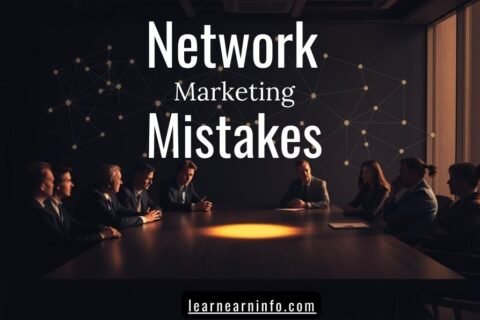**Table of Contents**
- Introduction
- Why Goal Setting is Crucial for Business Success
- What Are Business Goals?
- Types of Business Goals
- The 5 Business Goals Every Company Should Have
- Examples of Company Goals and Objectives
- The Power of SMART Goals in Business
- Steps for Setting Effective Business Goals
- Key Takeaways
- FAQ
**Introduction**
The Importance of Goal Setting in Business
Every successful business starts with a vision, but how do you turn that vision into reality? The answer lies in **goal setting**. Whether you are a budding entrepreneur or leading an established company, setting clear, achievable goals is the first step toward measurable progress. Imagine trying to run a marathon without knowing the distance or the finish line—it’s the same when running a business without well-defined goals.
**Question:** What happens when a business doesn’t set goals?
Without proper goals, your company can lose focus, and employees may not understand what they are working toward. Setting goals gives everyone a clear direction and shared purpose.
**Why Goal Setting is Crucial for Business Success**
A company builds a successful road plan when it establishes its objectives. These goals help everyone involved understand the direction the company is moving in and what needs to be done to get there. From managers to team members, having a clear objective ensures everyone is aligned and working toward the same outcomes.
Not only does goal setting foster better productivity, but it also provides milestones for celebrating successes, which boosts morale and motivates the team to push forward. Without goals, a business may risk stagnation or drift away from its mission.
**What Are Business Goals?**
**Business goals** are specific, clear-cut objectives that a company aims to achieve within a set timeframe. These can range from financial goals like increasing profits to operational goals like improving customer satisfaction. Business goals help to channel focus, effort, and resources into achieving meaningful results.
**Types of Business Goals**
There are several types of business goals, typically categorized by their timeframes:
- **Short-term goals**: These can be accomplished within a year (e.g., increasing website traffic by 10%).
- **Medium-term goals**: These may take between 1-3 years (e.g., expanding to a new market).
- **Long-term goals**: These are broader objectives that take 5 years or more to achieve (e.g., becoming a leader in your industry).
By setting goals within these categories, businesses can create a balanced and achievable growth plan.
**Examples of Setting Business Goals**
Some examples of business goals might include:
– ****Financial objective: 20% increase in yearly revenue.
– **Operational goal**: Improve delivery times by 15%.
– **Customer service goal**: Achieve a customer satisfaction rating of 90%.
These goals provide specific, measurable targets for companies to track their progress.
**The 5 Business Goals Every Company Should Have**
- **Profitability**: A company’s ability to turn a profit is what keeps it alive. Without it, the company cannot grow or sustain operations.
- **Growth**: Expanding the company in terms of new markets, products, or services keeps it competitive.
- **Customer Satisfaction**: Ensuring customers are happy leads to long-term loyalty and repeat business.
- **Sustainability**: Long-term success requires sustainable practices that support future growth without depleting resources.
- **Employee Satisfaction**: A happy and motivated workforce is essential for productivity and innovation.
**SMART Goals’ Power in Business****
You may have heard of **SMART goals**—a popular framework for goal setting in business. SMART stands for:
– **Specific**: Clearly state your goals for yourself.
– **Measurable**: Quantify your goals so you can track progress.
– **Achievable**: Establish reasonable goals that are doable.
– **Relevant**: Ensure your goals align with the broader company mission.
– ****Time-bound**: Establish due dates to foster concentration and urgency.
For instance, a SMART goal may be to “Increase sales by 15% within the next six months by implementing a new marketing strategy,” as opposed to aiming for something more general like “improve sales.”
**What Are Business Goals Examples?**
– **Increase monthly sales by 10% over the next quarter.**
– **Reduce product returns by 5% within the next year.**
– **Launch 3 new products within the next 12 months.**
Using SMART goals ensures that your business objectives are actionable, trackable, and ultimately achievable.
**Steps for Setting Effective Business Goals**
- **Identify Key Objectives**: Begin by defining what your business needs to achieve to succeed.
- **Set SMART Goals**: Make sure each goal is Specific, Measurable, Achievable, Relevant, and Time-bound.
- **Allocate Resources**: Ensure you have the people, tools, and budget needed to reach each goal.
- **Track Progress**: Regularly measure your performance against the set goals to stay on track.
- **Celebrate Success**: Acknowledge and reward milestones to keep your team motivated and focused on the next challenge.
**Key Takeaways**
– Goal setting is essential for both short-term and long-term success in business.
– Goals help align employees and management, ensuring everyone is working towards the same objectives.
– Your company’s goals become measurable, attainable, and obvious with MART goals in place.
– Setting both **personal** and **company-wide goals** fosters growth, productivity, and a clear sense of purpose.
**FAQ**
**Q: What are the 3 main goals of a business?**
A: The three main goals are profit, growth, and customer satisfaction.
**Q: What are examples of business goals?**
A: Increasing market share, raising consumer satisfaction levels, and diversifying product offerings are a few examples.
**Q: What is the importance of goal setting in business?**
A: Goal setting provides direction, motivation, and a framework for measuring progress, making it essential for growth and success.
This article helps businesses understand how **goal setting** directly impacts growth and success, with actionable steps and real-world examples to implement today.



















